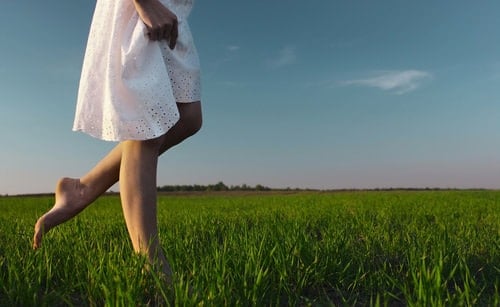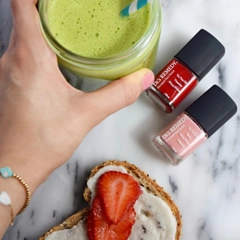6 Most Effective Home Remedies For Spider Veins

You have to face a lot of cosmetic embarrassment when you are suffering from spider veins. No one wants their legs to look like a bunch of red and blue vessels.
Are you suffering from them too? If yes then don’t worry, since you aren’t alone. It’s a common condition If you are either older or do a job in which you have to stand still for long durations.
Spider veins can happen to you if your veins have become weak over time. They need to do a lot of hard work while pumping back blood from the legs. And when they can’t do it anymore, they enlarge and lead to spider veins.
Most times, they are not painful but some people may feel itching and discomfort, which can be annoying.
If you are looking for treatment then nothing can be better than natural remedies. They will not only soothe your pain but they are cheaper than medical treatment as well.
That’s why we have made a list of the 6 most effective home remedies so that you can say goodbye to the annoying spider veins.
Aloe Vera

Aloe Vera is already well-known for improving skin health, you can use it to get rid of pimples and acne. But another use of it is treating spider veins. Due to its anti-inflammatory properties, it can easily reduce your swollen vessels and pain.
In addition, massaging it thoroughly on your legs can improve your blood situation.
You should apply it at least twice a day until veins aren’t visible anymore. You can even apply it before going to bed and leave it overnight.
Apple Cider Vinegar
Not everyone grows Aloe Vera at their house and sometimes it can be hard to find it as well. That’s why apple cider vinegar is the best alternative to it. It doesn’t only improve your blood circulation, but as a bonus, it cleans your body as well. Once the blood circulation is fine, your veins will automatically stop swelling.
Keep moving
Try to sit still as little as possible. If you must sit for extended periods of time at work, try to stand up and move around or change positions periodically to keep the blood flowing.
Avoid crossing your legs while sitting as this will restrict blood flow to your feet and legs even more, aggravating circulation problems.
Wear Loose-Fitting Clothing
Having blood flow restricted by tight clothing. Wearing loose-fitting clothing that doesn’t limit the blood supply to the lower body may help someone’s circulation.
The prevention of varicose veins in the legs may also be aided by wearing flat shoes rather than high heels.
Massage
The blood flow via the veins can be maintained by gently rubbing the afflicted areas. For best results, one should apply moisturizer or mild massage oils.
However, it is essential to avoid pressing directly on the veins as this could harm delicate tissues.
Medical Treatments Available For Spider veins
Everyone can’t use home remedies. such as people with a weak immune system or people with larger spider veins.
Even if they use these home remedies there will be no change because home remedies work only for mild conditions.
In such situations, they may feel that they can’t do anything to help their legs but this is where medical treatments come in. If you notice your problem isn’t getting better even after the use of natural treatments then it’s time to visit your doctor.
They may recommend you the following treatments, you should properly follow them:
1. Sclerotherapy
Sclerotherapy is the most well-known treatment for spider veins and varicose veins. If the home remedies don’t work then your doctor will probably recommend you this solution.
The treatment starts with your doctor injecting you a chemical in the swollen veins.
This special chemical irritates the blood vessel lining, causing it to collapse and clump together, resulting in blood clotting. The vessel eventually transforms into scar tissue and vanishes from view.
You may need multiple sessions to make the veins disappear, your spider veins are more likely to disappear in 3 to 4 weeks.
2. Compression Stockings
These stockings exert consistent pressure to assist in the return of blood to the heart. The steady pressure also helps to reduce edema and the risk of a blood clot in your lower legs.
Leg veins will still be apparent, though.
3. Endovenous Laser Treatment
This is another frequently used method to get rid of leg veins but it’s used for varicose veins most of the time.
In this procedure walls of the vein are heated by a laser at the end of the catheter, which shuts it. Blood stops flowing through the vein as a result of this.
How long do the results of spider vein treatments typically last?
The duration of results from spider vein treatments can vary depending on several factors, including the type of treatment used, the patient’s individual response, and the presence of underlying risk factors. In general:
- Sclerotherapy: The results of sclerotherapy can be long-lasting, with many patients experiencing a significant reduction or complete resolution of spider veins. However, new spider veins may develop over time, especially if underlying risk factors are not addressed. Maintenance treatments may be necessary in some cases.
- Laser therapy: Laser treatment can also provide long-lasting results, but like sclerotherapy, it may not prevent the development of new spider veins if underlying issues are not addressed.
- Lifestyle changes: Maintaining a healthy lifestyle and addressing risk factors, such as obesity and prolonged standing or sitting, can help prolong the results of spider vein treatments.
Should you prefer treatments over home remedies for spider veins?
Whether to prefer medical treatments over home remedies for spider veins depends on various factors, including the severity of the condition, individual preferences, and the advice of a healthcare provider. Here are some considerations:
1. Severity of Spider Veins: Home remedies like wearing compression stockings, elevating your legs, and regular exercise may be sufficient for mild cases of spider veins. However, for more severe or symptomatic spider veins, medical treatments like sclerotherapy or laser therapy may be more effective.
2. Symptomatic Relief: Medical treatments can provide quicker relief from symptoms such as pain, itching, or discomfort associated with spider veins.
3. Cosmetic Concerns: If you’re primarily concerned about the appearance of spider veins, medical treatments are often more effective at reducing their visibility. Home remedies may take longer to show visible improvements.
4. Consultation with a Healthcare Provider: It’s essential to consult with a healthcare provider or vascular specialist who can assess your specific condition and recommend the most appropriate treatment options.
Can Maintaining A Good Posture Affect Spider Vein Prevention?
Yes, it’s true that maintaining a good posture can play a significant role in preventing spider veins by improving factors like blood flow and reducing pressure on the veins in the lower body, here’s how:
1. Reduced Pressure On Veins: Terrible posture, especially when you are sitting or standing for long periods puts extra pressure on the veins in your legs. This may strain vein and valves, which as a result increases the likelihood of spider veins formation. If you maintain a neutral spine posture, it helps keeping the pressure even and minimizes the strain on the veins.
2. Better Circulation: Good posture promotes healthy blood flow in the body especially when you are standing or sitting. Furthermore, when you sit with legs crossed, it restricts your circulation and increased the chances of blood pooling in your legs, which contribute to spider veins overtime!
3. Prevention Of Blood Pooling: As mentioned earlier, pool posture and crossing legs increases the risks of blood pooling in legs, but if you have a good posture combined with regular activities, you can easily prevent blood pooling and reduce risks of problems like spider and varicose veins.
How Much Water Should I Drink To Support Vein Health?
Everywhere you go, you will be recommended to drink plenty of water and stay hydrated, since it helps maintaining blood flow and supports vein function, which is why you can easily use it to prevent spider veins. Usually it’s recommend to great at least 8 glasses of water a day, however this is baseline and some people may need extra.
Especially if they are active, live in hot climates, or have more weight. Proper hydration will keep from blood thickening, making it much easier for veins to transport blood back to the heart. So try to drink around 8 glasses of water a
ay.
Because blood is not flowing via a problematic vein, circulation improves as the body recovers from the surgery, and the issue vein shrinks and fades.
